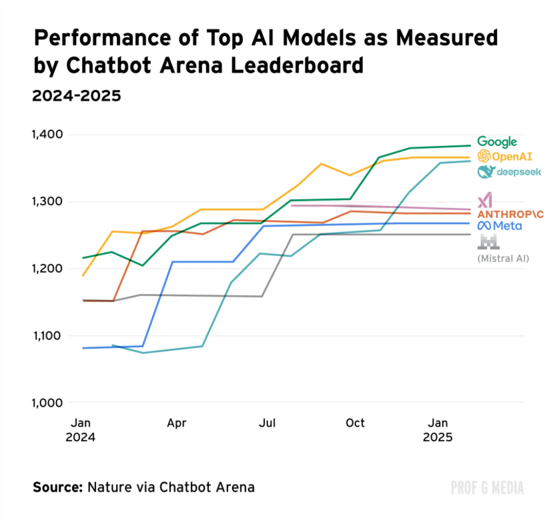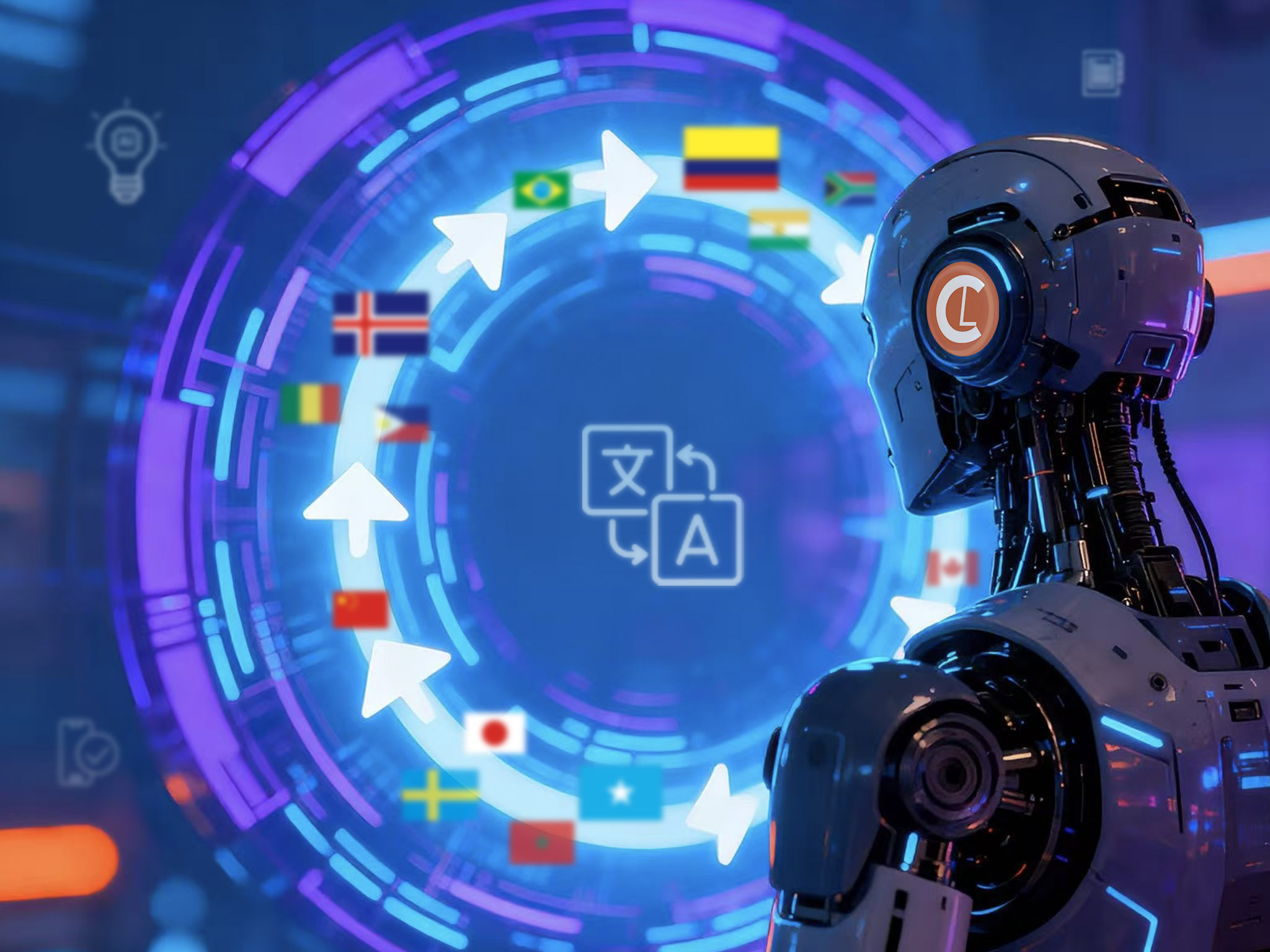In just two months after its release in late 2022, ChatGPT reached 100 million users, making it the fastest-growing consumer application in history. But beyond the headlines and hype, something more subtle—and arguably more profound—has been happening: ChatGPT has quietly begun reshaping how we express ourselves.
What started as a tool to help us write faster and better is now influencing the very way we communicate. From emails and essays to podcasts and casual conversations, the fingerprints of AI-generated language are everywhere. And that raises a critical question for content leaders and brand strategists: If everyone starts to sound like ChatGPT, how do you make sure your brand still sounds like you?
The Rise of “LLM-Speak”: How AI Is Rewriting the Way We Communicate
Let’s talk about “LLM-speak.” It’s a term that’s gaining traction among both linguists and content professionals. It refers to the polished, verbose, and often overly formal style that AI tools like ChatGPT tend to produce.
You’ve probably seen it—or even used it—without realizing. Words like “delve,” “meticulous,” “commendable,” and “realm” are popping up more frequently in online content, academic papers, and even spontaneous speech. Why? Because ChatGPT uses them a lot. And when millions of people use ChatGPT to polish their writing, those words start to spread.
A study found that the use of “delve” in academic publishing increased tenfold after ChatGPT’s release. Even more surprising? People started using it more in everyday conversation, too. The influence goes beyond word choice. Scholars are concerned that AI is homogenizing regional variations of English. A Cornell study, for example, found that AI may be influencing Indian English speakers to write in a style that sounds more American.
The result? A global flattening of linguistic identity. Content loses the quirks, regional flavors, and variations that make human communication engaging. This means the blogs, social posts, and emails you commission risk blending into a sea of sameness if they’re overly reliant on AI without human oversight.
The Cultural Feedback Loop
How did this happen so quickly? It’s driven by a powerful cultural feedback loop forming between humans and AI. It works like this: humans write → AI trains on human text → AI remixes it → humans imitate AI again. Over time, this loop tightens. The more we use AI to write, the more we start sounding like it. And the more we sound like it, the more AI learns to sound like us.
This leads to what Sam Altman, the CEO of OpenAI, recently described as the internet feeling “really fake.” He observed that platforms like X and Reddit feel artificial in a way they didn’t just a year or two ago. He attributed this not just to bots, but to real people picking up the “quirks of LLM-speak.”
For brands, this presents a real challenge. As audiences become more attuned to the sameness of AI-generated content, they begin to tune it out. In an internet saturated with synthetic content, the human touch is the only real differentiator.
Brand Voice in the Age of Homogenized Language
The challenge of standing out is compounded by another trend: AI models themselves are converging. The gap between the top model and the tenth-best has been cut in half in just a year, with the top contenders essentially tied. They are trained on largely the same datasets (Gutenberg, Wikipedia, etc.), and competitive advances are quickly copied.

This scenario echoes a classic marketing dilemma, famously articulated by Don Draper in the show Mad Men. When advising the cigarette brand Lucky Strike, he observed, “We have six identical companies making six identical products. We can say anything we want”. His point was that when product features are indistinguishable, the brand’s story is the only thing that sets it apart.
We’re already seeing this play out in the AI industry itself.
Take Anthropic’s “Keep Thinking” campaign. Instead of focusing on product features, it leaned into brand voice. The campaign positioned its Claude AI as a tool for people who “still want to think for themselves,” a direct contrast to the wave of AI-generated slop on the internet. This is a brilliant differentiation play based not on technical superiority, but on voice and philosophy. It’s a modern application of Don Draper’s principle that advertising offers “freedom from fear”: in this case, the fear of losing your own creative voice to a machine.

The lesson? In a world of commoditized AI, your voice is your moat. Brands that invest in deliberate, human-crafted tone infused with cultural sensitivity and local nuance will stand out. Those that don’t risk becoming indistinguishable.
The Future of Content: Where Human Craft Meets Machine Scale
So, where do we go from here?
The future of content isn’t about choosing between AI and humans. It’s about combining the scale and speed of AI with the discernment and creativity of human writers. For global content teams, this means rethinking how you use AI; not as a replacement, but as a collaborator.
Here’s how to start:
- Audit your brand language. Look for signs of LLM-speak. Are you overusing words like “delve,” “meticulous,” or “commendable”? Is your tone starting to sound more like a chatbot than a human?
- Train your team. Help writers and editors recognize AI-influenced phrasing. Encourage them to rewrite content that feels too generic or overly polished.
- Use AI strategically. Let it handle the heavy lifting—first drafts, translations, formatting—but always run content through a human filter for voice, nuance, and cultural relevance.
- Prioritize originality. In an AI-saturated internet, the most valuable content will be the kind that feels unmistakably human. That means storytelling, humor, vulnerability, and perspective, things AI can mimic but not truly create.
The business case is clear. As the internet becomes more synthetic, audiences will crave content that feels real. Brands that can deliver that—consistently and at scale—will win attention, trust, and loyalty.
Final Thoughts: Don’t Lose Your Voice
ChatGPT is changing the way we write, speak, and think. That’s not inherently bad, but it does mean we need to be more intentional about how we use it.
The takeaway is simple: don’t settle for content that sounds like everyone else’s. Partner with specialists who understand how to harness AI without losing what makes your brand sound human. Because in the end, your voice is your brand. And in a world of infinite content, it’s the only thing that truly sets you apart.
Stop blending in. Get Content That Sounds Like You



